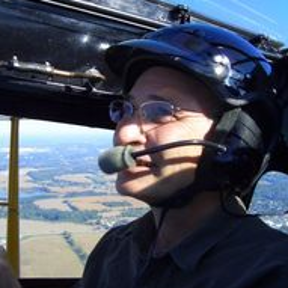Welcome to the Onshape forum! Ask questions and join in the discussions about everything Onshape.
First time visiting? Here are some places to start:- Looking for a certain topic? Check out the categories filter or use Search (upper right).
- Need support? Ask a question to our Community Support category.
- Please submit support tickets for bugs but you can request improvements in the Product Feedback category.
- Be respectful, on topic and if you see a problem, Flag it.
If you would like to contact our Community Manager personally, feel free to send a private message or an email.
Best Of
Re: Mating vs instances
I can think of a few reasons why that might be done.
- The assembly looks exactly like the parts studio so all is inserted a the same time but provides a BOM. Better to use insert part studio as rigid. and fix one of the parts so that nothing moves.
- Once any moving parts are added then mates must be used to keep the rest in place and animate functions. Looks odd if the gear box rotates around a gear.
- Assembly is done quickly for display/sample and mates can be done later.
- There are some that don't understand what mates are so they are not using them. If one of or all of parts are left loose they can be moved by accident and can be a bit confusing to put back in place. Best option is the learning center and some study time. You can get away with this for simple arrangements but once the assembly size grows or multiple instances of the same part are needed in one assembly it will become a huge problem. Moving parts in an assembly are impossible without mate. If fix is not applied to one of the parts the whole assembly can be displaced.
Re: Bug? How to drive sub assembly configuration variables (string)?
Same exact real world use case here but for colorway management. We have catalog components that clients are allowed to specify custom paint colors for and creating a new explicit table entry and SKU in a configuration window for every possible pantone paint color is not realistic nor what I would consider to be correct document control. We have a part studio level configuration variable driving a hex color code script which partially covers this use case but it does not propagate up the assembly levels. Numeric parameters pass correctly but this is a case where I need the text expression to be able to drive hex values from 0-F
Global assembly level control over text embossing is another valuable use case for us as well.
Re: Creating A folder within a document from the API
As far as I know there is no way to make folders inside of documents with the API.
I don't think theres even an API to get the folders or their contents inside documents.
Closest work around I could think of would be to have a template document in your Onshape with the structure you want, and then duplicate that document. But theres no really great way of launching that api call. The document list/info panel contexts require selecting another document - which is both weird and annoying if have an empty folder. Maybe that is less annoying than manually making that document structure.
This is common enough that I'd really like to see Onshape have a "Create > Document from template" option.
Re: pins feature script - could someone check it?
You'll need to increment i, probably at around line 109 or so? Just insert i+=1;
But you'll also need remove the "MaxNumberOfPicks" : 1 in line 33 to make it work for multiple vertex selections
Video tutorial: Working with 3D scans
Hey everyone, I've been spending time working with meshes and have a few videos lined up on the topic. The first one is ready today! It walks through my process for scanning an object, then modeling on top of that scan to create a 3D printed part that fits it perfectly. The future videos will cover some new custom features I've been developing for mesh work.
https://youtu.be/rscjUkmr-8g
 EvanReese
EvanReese
Re: Bug? How to drive sub assembly configuration variables (string)?
Thank you @MichaelPascoe and @Derek_Van_Allen_BD — this is helpful.
Re: New Login Screen, Citrus Circuits, FIRST Robotics
Hi there, Citrus Circuits Head Coach Mike Corsetto here!
I want to thank @IgnacioMartos and @DrewB_PTC for helping make this login screen possible. Our students were thrilled to have this opportunity to showcase their hard work to the entire Onshape community.
For some background, Citrus Circuits is a team of over 100 high school students and nearly 20 coaches from Davis, California. Our design subteam consists of nearly twenty 9-12 grade students who divide up the robot by subsystem and collaborate to design, prototype and build each part of the robot. The feature image shared above was generate by our senior Design Lead, Emma, and every subsystem shown was designed in Onshape by this amazing group of high school students.
The 2025 season has been incredible so far, Citrus Circuits has won all three of our regional events we've attended this season, including our event this past weekend where we set the World High Score. You can watch our robot compete on the red alliance in this match, look for the "1678" on the bumpers: https://youtu.be/fHMbXjOybrM?si=NTMFoqlNx5wYpvjc
This is our 7th season using Onshape, and what we've accomplished would not be possible without this amazing software. We look forward to continuing to train more students in cutting edge CAD through Onshape.
-Mike
Re: I have imac and can not figure out how to pan and move my view point
No need to thumbs down me for information that you failed to provide, which is that your using a Magic Mouse…
.
With that information in mind, here's some important steps I recommend for CAD use:
- Open your browser.
- Navigate to here, and click the purchase button.
- When it arrives, go to the nearest waste bin.
- Carefully toss the magic mouse into the waste bin.
- Enjoy the industry standard CAD mouse rated highly by most Onshape users. Best CAD Mouse Forum Post
.
Re: better approach to multiplying lofts on cones
Wow! That's a lot of work. A better approach would be to, in a sketch, create a profile of the cone and a centerline and use the Revolve tool to create a cone. Then use the Linear Pattern tool to create the other cones; unwanted instances can be Skipped. The base can be created on the bottom of a cone with a circle and the Use tool to capture the bases of the cones and then Extrude the resultant sketch. - Scotty
Re: Can I flatten curved parts?
This thread is a bit old so this might be unlikely to help. But in case other people are looking for answers, there is a button in the lower right.
Click the protractor that says "Show Analysis Tools" then "Flatten Surfaces." It should flatten even complex surfaces and highlight distortion (if the part is curved in multiple directions) and then you should be able to export a .dxf.











